Best Data Analytics Tools: Analytics and data analysis tools refer to software applications or platforms designed to process, analyze, and interpret data to extract valuable insights and support decision-making processes.
These tools can range from simple spreadsheet software to complex business intelligence platforms.
Key components and functionalities of analytics and data analysis tools:
- Data Collection: Tools in this category often have capabilities to collect data from various sources such as databases, spreadsheets, APIs, web scraping, and IoT devices. This data can be structured or unstructured, coming in different formats.
- Data Cleaning and Preparation: Before analysis, data often needs to be cleaned and prepared, which involves tasks like removing duplicates, handling missing values, standardizing formats, and transforming data into a suitable format for analysis.
- Data Exploration and Visualization: Visualization tools allow users to explore data visually through charts, graphs, maps, and dashboards. This helps in identifying patterns, trends, correlations, and outliers within the data.
- Statistical Analysis: Statistical analysis tools provide functionalities for conducting descriptive and inferential statistics, hypothesis testing, regression analysis, and other advanced statistical techniques to uncover relationships and make predictions.
- Machine Learning and Predictive Analytics: Advanced analytics tools incorporate machine learning algorithms and predictive analytics models to forecast future trends, classify data, segment customers, detect anomalies, and automate decision-making processes.
- Business Intelligence (BI): BI tools focus on providing insights into business operations and performance by aggregating, analyzing, and visualizing data from various sources. They often include features like interactive dashboards, ad-hoc reporting, and self-service analytics.
- Big Data Analytics: Tools designed for big data analytics handle large volumes of data generated at high velocity from diverse sources. They typically leverage distributed computing frameworks like Hadoop and Spark to process and analyze data in parallel across clusters of machines.
- Text Analytics and Natural Language Processing (NLP): These tools analyze and interpret text data from sources like social media, customer reviews, emails, and documents. NLP techniques extract meaning, sentiment, and insights from unstructured text data.
- Time Series Analysis: Time series analysis tools focus on analyzing data collected over time to identify patterns, seasonal effects, and trends. They are commonly used in forecasting and anomaly detection applications.
- Geospatial Analytics: Geospatial analytics tools analyze and visualize spatial data to uncover geographical patterns, spatial relationships, and location-based insights. They are used in fields like urban planning, logistics, environmental science, and marketing.
These are just some of the functionalities and capabilities offered by analytics and data analysis tools. Depending on the specific requirements and objectives of an organization or user, different tools may be more suitable for different use cases.
Table of Contents
Why Businesses Need Data Analytics Tools?

Data analytics tools are essential for businesses for several reasons:
- Decision Making: Data analytics tools help businesses make informed decisions based on data-driven insights rather than relying solely on intuition or past experiences. By analyzing data, businesses can identify trends, patterns, and correlations that inform strategic and operational decisions.
- Performance Monitoring: Analytics tools allow businesses to monitor key performance indicators (KPIs) and track progress towards business goals. This helps in assessing the effectiveness of strategies, campaigns, and initiatives, and making adjustments as needed to improve performance.
- Understanding Customers: Analyzing customer data helps businesses understand customer preferences, behavior, and needs. This enables businesses to personalize marketing messages, products, and services, and improve customer satisfaction and retention.
- Optimizing Operations: Data analytics tools can analyze operational data to identify inefficiencies, bottlenecks, and areas for improvement. This helps businesses optimize processes, reduce costs, and increase efficiency.
- Predictive Analytics: Predictive analytics tools use historical data to forecast future trends, outcomes, and events. This helps businesses anticipate market changes, customer behavior, and demand patterns, enabling them to proactively respond and capitalize on opportunities.
- Competitive Advantage: Businesses that effectively leverage data analytics gain a competitive advantage by making better-informed decisions, optimizing operations, and delivering superior customer experiences. Data-driven insights can help businesses differentiate themselves in the market and stay ahead of competitors.
- Risk Management: Data analytics tools can help businesses identify and mitigate risks by analyzing historical data, detecting anomalies, and predicting potential risks and threats. This enables businesses to take proactive measures to minimize risks and protect their interests.
- Resource Allocation: By analyzing data on resource usage, spending, and allocation, businesses can optimize resource allocation to maximize efficiency and effectiveness. This includes allocating budgets, manpower, and other resources to areas that yield the highest return on investment.
- Compliance and Governance: Data analytics tools help businesses ensure compliance with regulations and internal policies by monitoring and analyzing data for compliance violations, fraud, and other irregularities. This helps businesses maintain transparency, integrity, and trustworthiness.
- Innovation and Growth: Data analytics can uncover new opportunities for innovation and growth by identifying emerging trends, unmet customer needs, and untapped market segments. By leveraging data analytics, businesses can innovate products, services, and business models to drive growth and stay ahead in a rapidly changing market landscape.
Best Data Analytics Tools
1. Web and Digital Analytics Tools
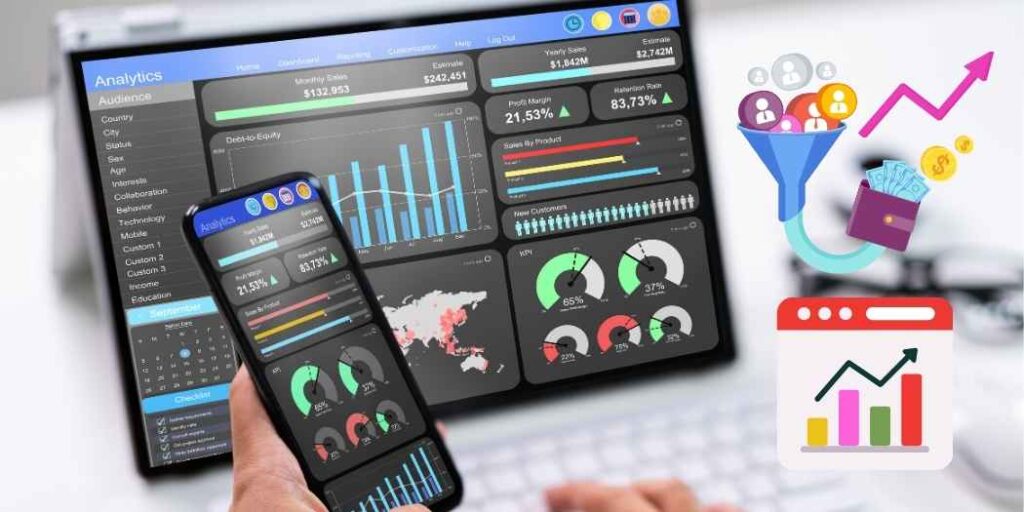
Web and digital analytics tools are essential for tracking and analyzing the performance of websites, apps, and online marketing campaigns. Here are some popular ones:
- Google Analytics: Google Analytics is a free web analytics service provided by Google. It tracks website traffic, user behavior, conversion rates, and more. It offers powerful reporting and visualization features and integrates with other Google products like Google Ads.
- Adobe Analytics: Formerly known as Omniture, Adobe Analytics is a comprehensive analytics solution for tracking and analyzing website and app performance. It provides advanced segmentation, real-time analytics, and predictive capabilities.
- Mixpanel: Mixpanel is a product analytics tool that focuses on user behavior analytics. It helps businesses track user interactions within their apps or websites, enabling them to understand user journeys, optimize conversion funnels, and personalize experiences.
- Heap: Heap is an automated analytics platform that captures user interactions on web and mobile apps without requiring manual event tracking. It allows for retroactive analysis and offers features like funnel analysis, cohort analysis, and segmentation.
- Hotjar: Hotjar is a behavior analytics and user feedback tool that provides insights into how users interact with websites and apps through heatmaps, session recordings, and surveys. It helps identify usability issues and optimize user experiences.
- Crazy Egg: Crazy Egg is a website optimization tool that offers heatmaps, scrollmaps, and other visualizations to understand user behavior and identify areas for improvement. It also provides A/B testing and user session recordings.
- Matomo (formerly Piwik): Matomo is an open-source web analytics platform that offers features similar to Google Analytics but with a focus on data privacy and ownership. It can be self-hosted, giving users full control over their data.
- Clicky: Clicky is a real-time web analytics tool that provides insights into website traffic, visitor behavior, and conversion rates. It offers heatmaps, uptime monitoring, and customizable dashboards.
- Kissmetrics: Kissmetrics is a customer engagement platform that helps businesses track and analyze customer behavior across multiple channels. It focuses on customer lifecycle analytics, retention analysis, and cohort analysis.
- Woopra: Woopra is a real-time customer analytics platform that tracks user behavior across websites, mobile apps, and other touchpoints. It offers advanced segmentation, funnel analysis, and integrations with marketing automation tools.
2. SEO and Content Analytics Tools

SEO (Search Engine Optimization) and content analytics tools are crucial for understanding how content performs in search engines and optimizing it for better visibility and engagement. Here are some popular tools in this category:
- Google Search Console: Google Search Console is a free tool provided by Google that helps website owners monitor and maintain their site’s presence in Google Search results. It provides insights into search performance, indexing status, and technical issues.
- Google Analytics: While primarily known for website traffic analysis, Google Analytics also offers valuable insights into organic search traffic, keyword performance, and user behavior on-site. It can be used to analyze the effectiveness of SEO efforts.
- SEMrush: SEMrush is an all-in-one SEO toolkit that offers features such as keyword research, competitive analysis, site audit, backlink analysis, and rank tracking. It provides insights into organic and paid search performance and helps identify opportunities for improvement.
- Ahrefs: Ahrefs is a comprehensive SEO toolset known for its backlink analysis capabilities. It offers features like keyword research, content analysis, rank tracking, site audit, and competitor analysis. It helps users understand their site’s authority and improve its visibility in search results.
- Moz Pro: Moz Pro provides a suite of SEO tools including keyword research, rank tracking, site audit, and backlink analysis. It also offers features like on-page optimization recommendations and local SEO insights.
- SE Ranking: SE Ranking is an all-in-one SEO platform that offers features like keyword tracking, competitor analysis, backlink monitoring, and on-page SEO audit. It also includes tools for social media management and marketing.
- BuzzSumo: BuzzSumo is a content marketing tool that helps users discover trending topics, analyze content performance, and identify influencers in their industry. It provides insights into which content types and topics resonate with the audience.
- Screaming Frog SEO Spider: Screaming Frog SEO Spider is a website crawler that helps identify technical SEO issues such as broken links, duplicate content, and missing metadata. It provides valuable insights for site optimization.
- SpyFu: SpyFu is a competitive intelligence tool that allows users to research competitors’ SEO strategies, including their organic keywords, PPC campaigns, and backlink profile. It helps identify opportunities and optimize SEO efforts.
- ContentKing: ContentKing is a website monitoring tool that continuously audits websites for SEO issues, content changes, and technical errors. It provides real-time alerts and insights to improve website performance.
These tools offer various features and pricing plans, catering to the needs of different businesses and marketers for SEO and content analytics.
3. Social Media Analytics Tools

Social media analytics tools are essential for businesses and marketers to track and analyze their performance on various social media platforms. Here are some popular tools in this category:
- Hootsuite: Hootsuite is a social media management platform that offers features for scheduling posts, monitoring conversations, and analyzing social media performance. It provides customizable reports and analytics across multiple social networks.
- Buffer: Buffer is a social media management tool that allows users to schedule posts, track performance, and engage with their audience across various social media platforms. It offers detailed analytics and insights into post engagement and reach.
- Sprout Social: Sprout Social is a comprehensive social media management and analytics platform that offers features for scheduling posts, monitoring keywords, and analyzing audience engagement. It provides in-depth reporting and customizable dashboards.
- Agorapulse: Agorapulse is a social media management tool that offers features for scheduling posts, monitoring conversations, and analyzing engagement across multiple platforms. It provides detailed analytics and reporting for better insights.
- Brandwatch: Brandwatch is a social listening and analytics platform that helps businesses monitor brand mentions, track industry trends, and analyze audience sentiment across social media channels. It provides advanced analytics and customizable dashboards.
- Socialbakers: Socialbakers is a social media marketing platform that offers features for content scheduling, audience engagement, and performance analytics. It provides insights into audience demographics, content trends, and competitive benchmarking.
- Falcon.io: Falcon.io is a social media management platform that offers tools for content publishing, community engagement, and performance analytics. It provides real-time monitoring, sentiment analysis, and customizable reporting.
- Tailwind: Tailwind is a social media marketing tool specifically designed for Pinterest and Instagram. It offers features for scheduling posts, analyzing performance, and optimizing content strategy. It provides insights into trends and audience engagement.
- Meltwater: Meltwater is a media intelligence platform that offers social media monitoring, analytics, and engagement tools. It helps businesses track brand mentions, monitor competitor activity, and measure social media ROI.
- Keyhole: Keyhole is a social media analytics tool that specializes in tracking hashtags and keywords across various platforms. It provides real-time data, sentiment analysis, and performance metrics for hashtag campaigns and social media events.
4. Customer Data Platforms (CDP) and Customer Analytics
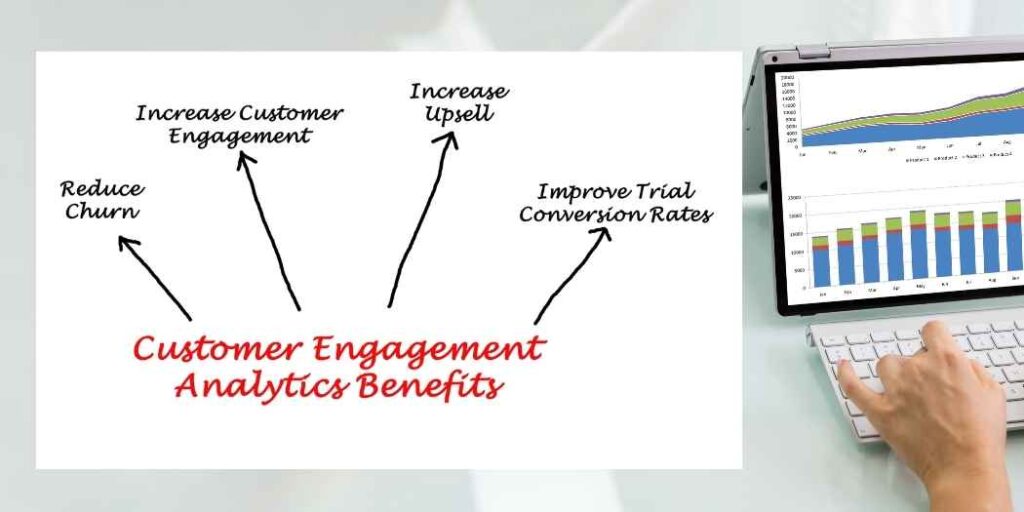
Customer Data Platforms (CDP) and customer analytics tools are instrumental in aggregating, organizing, and analyzing customer data to derive actionable insights and improve customer experiences. Here are some key platforms and tools in this domain:
- Segment: Segment is a customer data platform that helps businesses collect, unify, and manage customer data from various sources, such as websites, mobile apps, and third-party integrations. It enables companies to create a unified customer profile and leverage this data for analytics and personalization.
- Adobe Experience Platform: Adobe Experience Platform is an enterprise-level customer data platform that provides capabilities for data collection, segmentation, and activation. It integrates with Adobe’s suite of marketing and analytics tools to deliver personalized experiences across channels.
- Salesforce Customer 360 Platform: Salesforce Customer 360 Platform allows businesses to unify customer data from multiple sources and create a single view of the customer. It provides tools for data integration, segmentation, and analytics to drive personalized engagement strategies.
- Oracle CX Unity: Oracle CX Unity is a customer data platform that enables businesses to collect, unify, and analyze customer data in real-time. It offers AI-powered analytics and segmentation capabilities to deliver personalized experiences across marketing, sales, and service channels.
- Tealium AudienceStream: Tealium AudienceStream is a customer data platform that helps businesses collect, enrich, and activate customer data in real-time. It provides audience segmentation, journey orchestration, and predictive analytics to optimize customer engagement.
- Segment: Segment is a customer data infrastructure platform that helps businesses collect, clean, and route customer data to various tools and destinations. It offers a unified API for data integration and provides insights into customer behavior and trends.
- Lytics: Lytics is a customer data platform that focuses on delivering personalized experiences through data-driven insights. It offers features for data collection, segmentation, and predictive analytics to improve customer engagement and retention.
- BlueConic: BlueConic is a customer data platform that enables businesses to collect, unify, and activate customer data across channels. It provides real-time customer insights, segmentation, and orchestration capabilities to deliver personalized experiences.
- ActionIQ: ActionIQ is a customer data platform that helps enterprises leverage customer data for marketing and analytics purposes. It offers advanced analytics, segmentation, and campaign orchestration features to drive personalized interactions at scale.
- Exponea: Exponea is a customer data platform that combines customer data collection, analytics, and engagement automation. It provides predictive analytics, customer segmentation, and omnichannel campaign management capabilities to optimize customer experiences.
These platforms and tools empower businesses to harness the power of customer data for better understanding customer behavior, improving targeting and personalization, and driving business growth.
5. User Behavior and Experience Analytics Tools
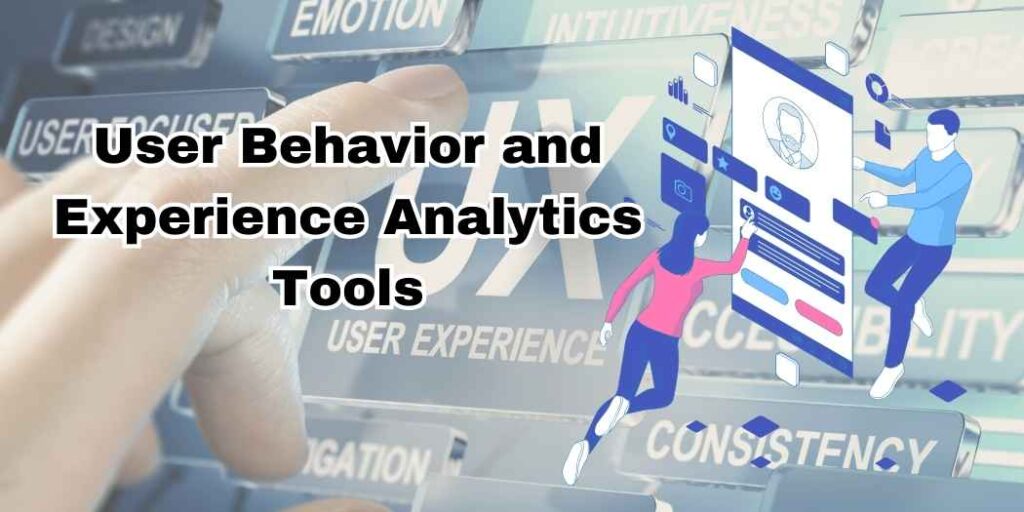
User behavior and experience analytics tools are essential for understanding how users interact with digital products, websites, and applications. Here are some popular tools in this category:
- Google Analytics: Google Analytics is a widely-used web analytics tool that provides insights into user behavior on websites. It offers features such as traffic analysis, user flow visualization, conversion tracking, and demographic reporting.
- Hotjar: Hotjar is a behavior analytics tool that offers features like heatmaps, session recordings, and user surveys. It helps businesses visualize and understand how users interact with their websites or web applications, identify usability issues, and optimize user experience.
- Crazy Egg: Crazy Egg provides heatmaps, scrollmaps, and user session recordings to visualize user behavior on websites. It helps businesses identify areas of interest and understand how users navigate through their site.
- FullStory: FullStory offers session replay, heatmaps, and advanced search capabilities to analyze user behavior on websites and web applications. It provides insights into user interactions, errors, and friction points to optimize user experience.
- Mouseflow: Mouseflow is a user behavior analytics tool that offers session replay, heatmaps, funnels, and form analytics. It helps businesses understand how users interact with their website or app and identify areas for improvement.
- Inspectlet: Inspectlet provides session recordings, heatmaps, and form analytics to analyze user behavior on websites. It helps businesses understand user interactions, identify usability issues, and optimize conversion rates.
- Pendo: Pendo is a product analytics platform that offers features for user behavior tracking, in-app messaging, and product feedback collection. It helps businesses understand how users engage with their digital products and drive product adoption and retention.
- Quantum Metric: Quantum Metric is a digital experience analytics platform that provides real-time insights into user behavior, performance issues, and conversion funnel optimization. It helps businesses identify and prioritize areas for improvement to enhance user experience.
- Mixpanel: Mixpanel is an analytics platform that focuses on user behavior tracking and analysis. It provides features such as event tracking, funnel analysis, and cohort analysis to understand how users engage with digital products and drive product improvements.
- UXCam: UXCam offers session replay, heatmaps, and user journey analysis to understand user behavior in mobile apps. It helps businesses identify usability issues, optimize user experience, and drive app adoption and retention.
These tools offer a range of features for analyzing user behavior and optimizing user experience across websites, web applications, and mobile apps. Depending on specific needs and preferences, businesses can choose the tool that best fits their requirements.
6. E-commerce Analytics

E-commerce analytics tools are crucial for online retailers to understand customer behavior, optimize marketing strategies, and drive sales. Here are some popular tools in this category:
- Google Analytics Enhanced E-commerce: Google Analytics offers enhanced e-commerce tracking capabilities specifically designed for online retailers. It provides insights into sales performance, product popularity, conversion rates, and customer behavior throughout the purchase journey.
- Shopify Analytics: Shopify provides built-in analytics features for merchants using its e-commerce platform. It offers reports on sales, orders, customer behavior, and marketing performance, helping businesses make data-driven decisions to grow their online stores.
- WooCommerce Analytics: WooCommerce, a popular e-commerce plugin for WordPress, offers built-in analytics features and integrations with third-party tools. It provides reports on sales, customer behavior, product performance, and marketing effectiveness for WooCommerce-powered online stores.
- Klaviyo: Klaviyo is an e-commerce marketing platform that offers advanced analytics and segmentation capabilities. It helps businesses track customer behavior, segment audiences, and personalize marketing campaigns to drive sales and customer loyalty.
- Magento Business Intelligence: Magento Business Intelligence is a cloud-based analytics platform tailored for Magento e-commerce stores. It provides customizable dashboards, reports, and data visualizations to track sales performance, customer behavior, and marketing effectiveness.
- Adobe Analytics for E-commerce: Adobe Analytics offers specialized solutions for e-commerce businesses, providing insights into customer behavior, conversion funnels, and marketing ROI. It integrates with Adobe’s suite of marketing tools for personalized experiences and campaign optimization.
- Metorik: Metorik is an analytics and reporting tool designed specifically for WooCommerce and Shopify stores. It offers real-time sales reports, customer segmentation, and email automation features to help merchants understand their e-commerce performance and improve marketing efforts.
- Yotpo: Yotpo is a customer content marketing platform that provides e-commerce analytics along with tools for collecting and leveraging user-generated content. It offers insights into customer sentiment, product reviews, and social proof to drive conversions and brand loyalty.
- Crazy Egg E-commerce Analytics: Crazy Egg offers e-commerce analytics features such as heatmaps, session recordings, and A/B testing to understand user behavior and optimize conversion rates on e-commerce websites.
- Heap E-commerce Analytics: Heap is an analytics platform that provides event-based tracking and analysis for e-commerce businesses. It helps track user interactions, analyze conversion funnels, and optimize the user experience to drive sales and revenue.
These tools offer a range of features for tracking sales, analyzing customer behavior, and optimizing marketing efforts to maximize e-commerce success. Depending on specific requirements and preferences, businesses can choose the tool that best fits their needs.
7. Email Marketing Analytics

Email marketing analytics tools are essential for tracking the performance of email campaigns, understanding subscriber behavior, and optimizing marketing strategies. Here are some popular tools in this category:
- Mailchimp: Mailchimp is a widely used email marketing platform that offers robust analytics features. It provides insights into email open rates, click-through rates, bounce rates, and conversion rates. Mailchimp also offers A/B testing capabilities to optimize email campaigns.
- Constant Contact: Constant Contact is an email marketing platform that offers comprehensive analytics and reporting features. It provides insights into email engagement metrics, audience demographics, and campaign performance over time. Constant Contact also offers A/B testing and segmentation capabilities.
- Campaign Monitor: Campaign Monitor provides detailed analytics and reporting features to track email campaign performance. It offers metrics such as open rates, click-through rates, conversions, and revenue generated from email campaigns. Campaign Monitor also offers A/B testing and audience segmentation features.
- HubSpot: HubSpot’s email marketing software offers analytics and reporting features to track email campaign performance and subscriber behavior. It provides insights into email engagement metrics, lead conversion rates, and customer lifetime value. HubSpot also offers A/B testing and personalization features.
- GetResponse: GetResponse is an email marketing platform that offers analytics and reporting features to track email campaign performance. It provides insights into email open rates, click-through rates, and subscriber engagement. GetResponse also offers A/B testing and segmentation capabilities.
- Sendinblue: Sendinblue offers email marketing and marketing automation features with built-in analytics and reporting. It provides insights into email campaign performance, subscriber behavior, and audience segmentation. Sendinblue also offers A/B testing and personalization features.
- ConvertKit: ConvertKit is an email marketing platform designed for creators and bloggers. It offers analytics and reporting features to track email campaign performance, subscriber engagement, and audience growth. ConvertKit also offers A/B testing and automation features.
- AWeber: AWeber is an email marketing platform that offers analytics and reporting features to track email campaign performance. It provides insights into email open rates, click-through rates, and subscriber behavior. AWeber also offers A/B testing and segmentation capabilities.
- Drip: Drip is an e-commerce-focused email marketing platform that offers analytics and reporting features tailored for online retailers. It provides insights into email campaign performance, revenue generated from email campaigns, and customer behavior. Drip also offers A/B testing and segmentation capabilities.
- Mailjet: Mailjet is an email marketing platform that offers analytics and reporting features to track email campaign performance. It provides insights into email open rates, click-through rates, and subscriber engagement. Mailjet also offers A/B testing and segmentation features.
These tools offer a range of features for tracking and analyzing email campaign performance, subscriber behavior, and audience segmentation. Depending on specific requirements and preferences, businesses can choose the tool that best fits their needs.
8. Data Visualization and BI Tools
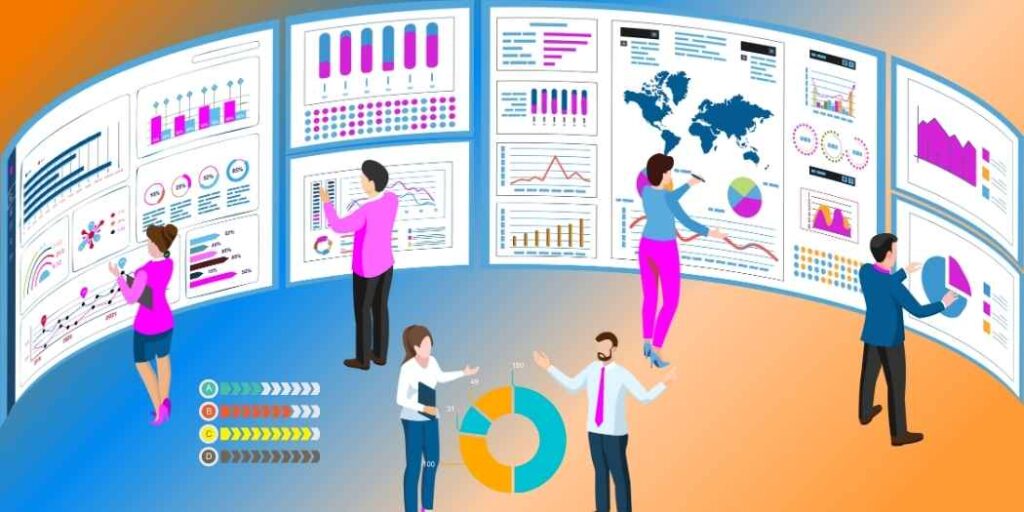
Data visualization and Business Intelligence (BI) tools are essential for transforming raw data into actionable insights and visually presenting information to facilitate decision-making. Here are some popular tools in this category:
- Tableau: Tableau is a powerful and widely-used data visualization tool that allows users to create interactive dashboards and reports. It supports a wide range of data sources and offers advanced analytics capabilities for exploring and visualizing data.
- Microsoft Power BI: Power BI is a business analytics tool that enables users to visualize and share insights from their data. It offers features such as data modeling, interactive dashboards, and AI-powered analytics. Power BI integrates with various data sources and services, including Microsoft Excel and Azure.
- QlikView / Qlik Sense: QlikView and Qlik Sense are data visualization and BI platforms that offer associative data modeling and in-memory data processing capabilities. They enable users to create interactive visualizations and explore data relationships.
- Google Data Studio: Google Data Studio is a free data visualization tool that allows users to create custom reports and dashboards using data from various sources, including Google Analytics, Google Sheets, and Google Ads. It offers features for data blending, visualization, and collaboration.
- Domo: Domo is a cloud-based BI platform that provides features for data integration, visualization, and collaboration. It offers pre-built connectors to various data sources and allows users to create interactive dashboards and reports.
- Looker: Looker is a data platform that offers data modeling, exploration, and visualization capabilities. It allows users to create interactive dashboards and reports using a semantic data modeling layer.
- Sisense: Sisense is a BI platform that offers features for data preparation, analysis, and visualization. It allows users to create interactive dashboards and reports using a drag-and-drop interface.
- IBM Cognos Analytics: Cognos Analytics is a BI platform that provides features for reporting, dashboards, and data exploration. It offers AI-powered analytics capabilities and supports a wide range of data sources.
- TIBCO Spotfire: Spotfire is a data visualization and analytics platform that offers features for interactive dashboards, predictive analytics, and data discovery. It allows users to explore and visualize data to uncover insights and make data-driven decisions.
- Chartio: Chartio is a cloud-based BI tool that offers features for data visualization, exploration, and collaboration. It allows users to create custom dashboards and reports using a drag-and-drop interface.
These tools offer various features for data visualization, exploration, and analysis, catering to the needs of different organizations and users. Depending on specific requirements and preferences, businesses can choose the tool that best fits their needs.
Conclusion
In conclusion, data analytics tools are indispensable assets for businesses in today’s fast-paced and competitive landscape. By harnessing the power of data, businesses can gain valuable insights into customer behavior, market trends, and operational efficiency, enabling them to make informed decisions and drive growth. With the right data analytics tools and strategies in place, businesses can unlock new opportunities, optimize performance, and stay ahead of the curve in an ever-evolving business environment.
In this data-driven era, businesses that embrace analytics as a core component of their operations will have a distinct advantage over those that rely solely on intuition or outdated methods. By leveraging data analytics tools effectively, businesses can position themselves for long-term success, drive innovation, and deliver exceptional value to customers, ultimately propelling them towards their goals and aspirations.
FAQs
- What are data analytics tools?
- Data analytics tools are software applications or platforms designed to process, analyze, and interpret data to extract valuable insights and support decision-making processes.
- Why do businesses need data analytics tools?
- Businesses need data analytics tools to make informed decisions, optimize operations, understand customers, gain a competitive advantage, manage risks, and drive innovation and growth.
- What types of data can be analyzed with data analytics tools?
- Data analytics tools can analyze various types of data, including structured data (e.g., databases, spreadsheets) and unstructured data (e.g., text, images, videos), from sources such as websites, social media, IoT devices, and more.
- How do data analytics tools help businesses understand customers?
- Data analytics tools help businesses analyze customer data to understand preferences, behavior, and needs. This enables businesses to personalize marketing messages, products, and services and improve customer satisfaction and retention.
- What is the difference between business intelligence (BI) and data analytics?
- Business intelligence focuses on providing insights into business operations and performance through reporting, dashboards, and data visualization, while data analytics involves analyzing data to uncover insights and make predictions.
- What are some popular data analytics tools?
- Popular data analytics tools include Tableau, Microsoft Power BI, Google Analytics, IBM Cognos Analytics, QlikView, and more.
- How do data analytics tools help with decision-making?
- Data analytics tools provide insights and predictions based on data analysis, helping businesses make informed decisions and optimize strategies and operations.
- What is predictive analytics?
- Predictive analytics is a branch of data analytics that uses historical data to forecast future trends, outcomes, and events.
- How can businesses use data analytics tools for marketing?
- Businesses can use data analytics tools for marketing by analyzing customer data to personalize messages, target audiences more effectively, and measure the effectiveness of marketing campaigns.
- Are data analytics tools only for large businesses?
- No, data analytics tools are available for businesses of all sizes, with options ranging from simple spreadsheet software to complex business intelligence platforms.
- Can data analytics tools help with risk management?
- Yes, data analytics tools can help with risk management by analyzing historical data, detecting anomalies, and predicting potential risks and threats.
- What is the role of data analytics tools in innovation?
- Data analytics tools can uncover new opportunities for innovation by identifying emerging trends, unmet customer needs, and untapped market segments.
- How do data analytics tools handle big data?
- Data analytics tools designed for big data analytics use distributed computing frameworks like Hadoop and Spark to process and analyze large volumes of data across clusters of machines.
- Can data analytics tools integrate with other software applications?
- Yes, many data analytics tools offer integrations with other software applications and data sources, allowing for seamless data sharing and analysis.
- How can businesses ensure data security and privacy when using data analytics tools?
- Businesses can ensure data security and privacy by implementing proper access controls, encryption, and data anonymization measures and complying with regulations such as GDPR and CCPA.
- What skills are needed to use data analytics tools effectively?
- Skills needed to use data analytics tools effectively include data analysis, statistical analysis, data visualization, and programming skills (e.g., SQL, Python, R).
- Can businesses use data analytics tools for real-time analytics?
- Yes, many data analytics tools offer real-time analytics capabilities, allowing businesses to analyze data and make decisions in real-time.
- How can businesses measure the return on investment (ROI) of data analytics tools?
- Businesses can measure the ROI of data analytics tools by tracking key metrics such as cost savings, revenue growth, productivity improvements, and customer satisfaction.
- Are there free or open-source data analytics tools available?
- Yes, there are many free or open-source data analytics tools available, such as R, Python (with libraries like Pandas and NumPy), Apache Spark, and Google Data Studio.
- How can businesses get started with data analytics?
- Businesses can get started with data analytics by defining goals and objectives, identifying relevant data sources, selecting appropriate tools and technologies, and building a data-driven culture within the organization.

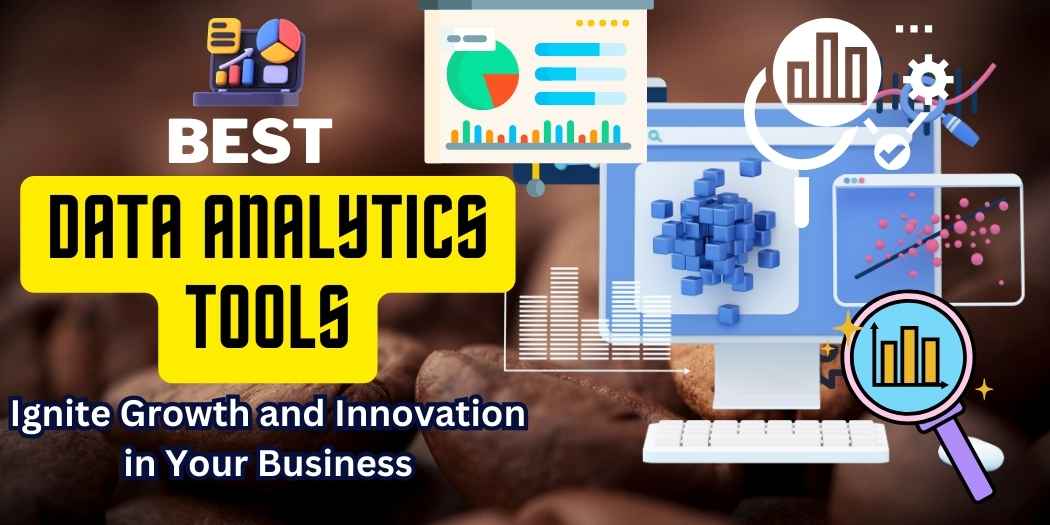
1 thought on “Best Data Analytics Tools: Ignite Growth and Innovation in Your Business”